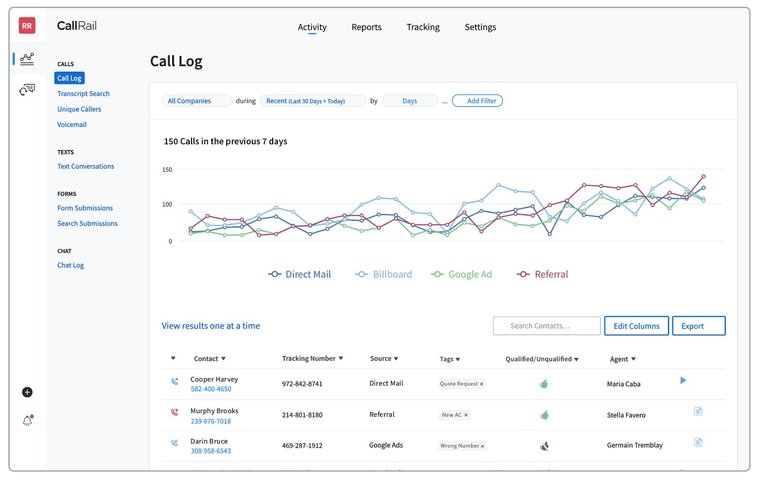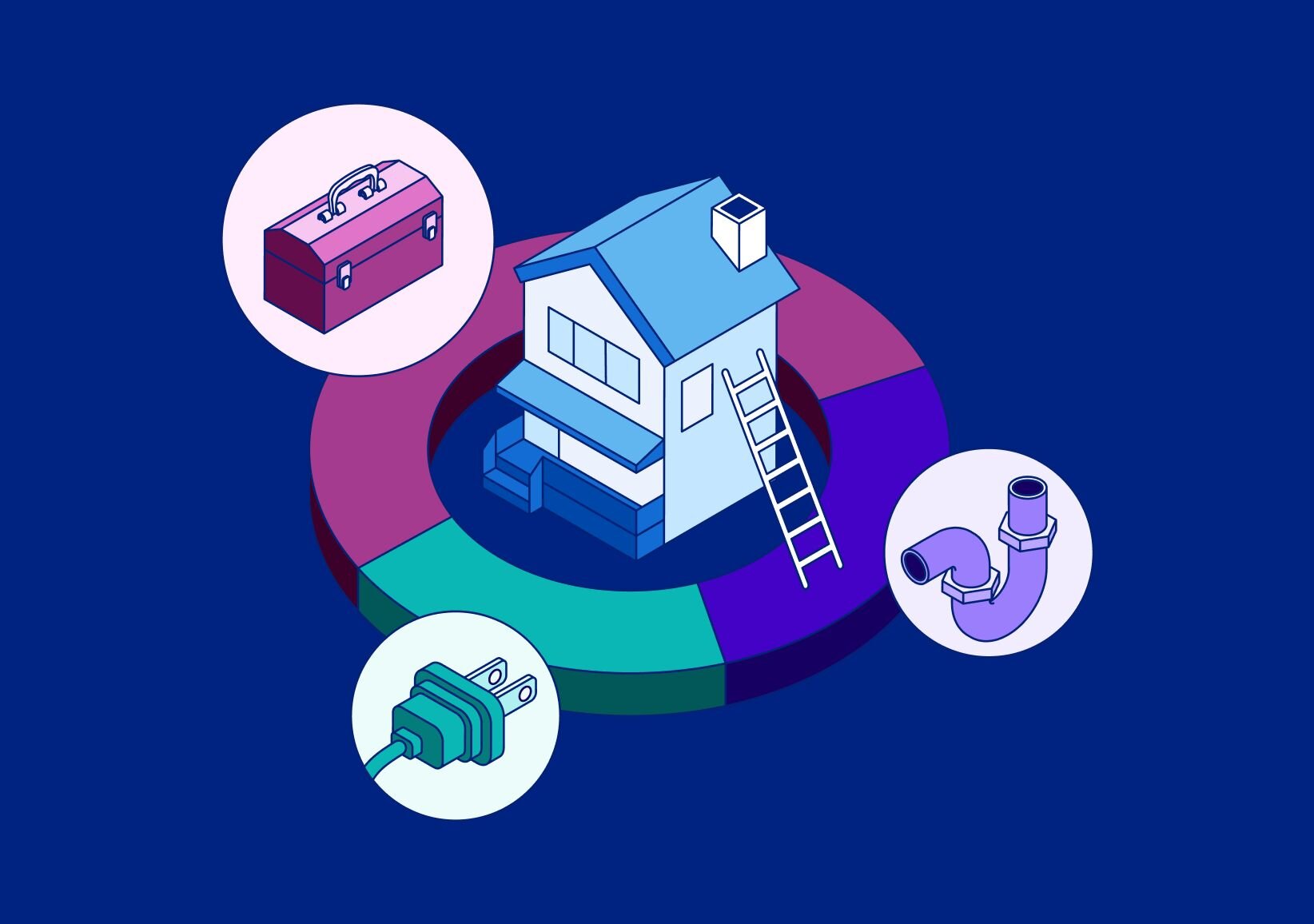In today's business world, one thing rings true above all else: if you're not online, you don't exist. This is especially pertinent for home service businesses, such as plumbers, electricians, cleaners, and landscapers. A strong online presence means more visibility and more visibility means more customers. The key to online visibility? Search engine optimization, or SEO.
Let's consider an example. Meet Joe. Joe runs a small plumbing business. He's an excellent plumber and gets good reviews from his customers. However, his customer base is small simply because not many people know about him. To grow his business, Joe decided to focus on SEO. The result? A significant increase in calls, appointments, and customer reviews. So, how did he do it?
This comprehensive guide will walk you through the steps to mastering SEO for your home services business, just like Joe did. From understanding the basics of SEO to leveraging advanced tools such as CallRail, we've got you covered.
Key Takeaways
- SEO, when applied right, can increase the visibility of home service businesses, driving more potential customers to their websites.
- Tools like CallRail offer valuable insights into customer behaviors, helping businesses understand which SEO strategies work best.
- The choice between managing SEO in-house or hiring a professional agency depends on each business's unique needs and resources, but either way, understanding the basics of SEO is fundamental to making informed decisions and achieving success.
Understanding the Basics of SEO
SEO can be intimidating, but it's actually quite straightforward once you get to know it. At its core, SEO is about making your business discoverable on the internet. When people need a service, the first place they go to is usually a search engine like Google. They type in what they're looking for, such as "plumber near me," and Google provides them with a list of options. These typed words are what we call "keywords," and they're instrumental in getting your business to appear in those search results.
But where should these keywords go? This is where on-page and off-page SEO comes into play. On-page SEO involves optimizing the content and technical elements of your website. This includes incorporating keywords into your website copy, meta tags, headers, and image descriptions. Think of on-page SEO like a shop's signpost: it helps people understand what you offer when they visit your website.
Off-page SEO, on the other hand, is about enhancing your website’s relationship with other websites. This includes earning backlinks (when other sites link to yours), social media marketing, and guest blogging. Consider off-page SEO as word-of-mouth: it helps build your website’s reputation in the broader internet community.
Importance of Local SEO for Home Service Businesses
For home service businesses that serve specific geographic areas, local SEO is particularly important. It involves optimizing your online presence to attract customers from relevant local searches.
One of the ways to do this is by setting up and regularly updating your free Google Business Profile listing. This listing includes your business name, location, hours, and customer reviews. When someone performs a local search, Google pulls information from these listings for its Local Pack and Maps results.
In addition to Google My Business, other local SEO strategies include managing online reviews and ratings, optimizing for local keywords (like "plumbing services in Austin"), and creating locally relevant content.
An example of a successful local SEO is a home repair service based in Texas. After optimizing their local SEO, they experienced an increase in calls from local customers. By making sure their business information was accurate and easy to find, they attracted more local customers than ever before.
Building a Search-Friendly Website
Having a website isn't enough; you need to ensure it's designed in a way that Google (and your users) love. An efficient website doesn't just look good – it loads quickly, is easy to navigate, and delivers information that customers are searching for.
Speed is of the essence in today's fast-paced digital world. If your website takes too long to load, potential customers will likely bounce off and find a faster alternative. So, make sure your site's loading speed is up to par. This includes optimizing images, reducing unnecessary code, and choosing a reliable hosting service.
Navigation is equally important. Visitors should be able to find the information they need without digging around. Include clear menus, a search bar, and links to important pages on your homepage.
Then there's the content. It should be clear, concise, and, most importantly, valuable to your customers. Include detailed descriptions of your services, prices, and contact information. ABC Home Services is a great example. Their website includes clear listings of their services, a simple quote request form, and customer testimonials, all in a neat, user-friendly layout.
Creating Valuable Content for Your Audience
Creating content isn't just about filling space on your website. It's about providing value to your customers. This content can take many forms - blog posts, how-to guides, videos, infographics, etc.
To create valuable content, start by identifying what your customers want to know. What are their common questions and concerns? What kind of information are they looking for when they need your services? Once you know this, you can create content that answers these questions and meets their needs.
For instance, XYZ Cleaning Services discovered that their customers often wondered how often they should have their homes deep cleaned. To address this, they created a blog post explaining the factors that can affect cleaning frequency. By providing this valuable information, they attracted more visitors to their website and positioned themselves as experts in their field.
Remember, content is king in SEO. Google loves websites that provide valuable, fresh content regularly. Moreover, good content can earn you backlinks, as other websites may link to your useful content, boosting your off-page SEO.
Harnessing the Power of Backlinks
Having a great website and valuable content is a good start, but you also need other websites to acknowledge your content's value. This is where backlinks come in. A backlink is simply a link from another website to your site. These are crucial for SEO as they tell search engines that your content is credible and valuable, much like a thumbs up.
Backlinks are not created equal. Those from reputable, high-traffic sites carry more weight than those from lesser-known sites. How do you earn these high-quality backlinks? Here are some strategies:
- Create valuable, shareable content: Other websites will naturally want to link to your content if it provides value to their readers.
- Guest post: Write a post for a reputable blog in your industry. Most will allow you to include a link back to your website in your author bio.
- Engage with your local community: Participate in community events, sponsor a local team, or join your local Chamber of Commerce. Often, these activities lead to a feature on the respective websites, earning you a backlink.
Consider a local landscaping business that participated in a community garden makeover. Their involvement was covered by a popular local blog, earning them a valuable backlink and increased visibility.
Leveraging Call Tracking for SEO with CallRail

In the quest for SEO mastery, tools that provide actionable insights are your allies. One such tool is CallRail, a call tracking solution that reveals where your phone leads are coming from. How does this help SEO? It tells you which keywords or campaigns are working best.
For instance, Joe's Plumbing used CallRail and found out that most of their calls were coming from searches like "emergency plumber near me". Armed with this information, Joe focused his SEO efforts on these high-performing keywords, leading to even more calls and appointments.
CallRail also integrates with other marketing and analytics platforms like Hubspot, giving you a comprehensive view of your performance. With the right tools and insights, you can make informed decisions to fine-tune your SEO strategy.
Measuring SEO Success: Key Metrics to Track
How do you know if your SEO efforts are paying off? By tracking the right metrics. Some key SEO metrics to keep an eye on include:
- Organic Traffic: The number of visitors coming to your site from search engine results. A rise in organic traffic is a good sign your SEO strategy is working.
- Keyword Rankings: The positions your targeted keywords hold in the search engine results. Higher rankings mean greater visibility and more potential for clicks.
- Bounce Rate: The percentage of visitors who leave your site after viewing just one page. A high bounce rate might mean that your content isn't meeting the needs of your visitors or that your website is hard to navigate.
- Page Load Time: The time it takes for your pages to load. Slower load times can lead to higher bounce rates and lower rankings in search results.
- Conversion Rate: The percentage of website visitors who complete a desired action, like filling out a form or making a phone call. A rise in conversion rate means more business!
Keeping track of these metrics will give you a clear picture of your SEO performance. Tools like Google Analytics can provide these insights.
In-house SEO vs. Hiring an SEO Agency: Weighing the Pros & Cons
At this point, you might be wondering if it's best to handle SEO in-house or hire an agency. Both options have their advantages and drawbacks.
Handling SEO in-house gives you more control and potentially lower costs. But it can also be time-consuming and require a steep learning curve. A business owner who chooses the in-house route may find that it takes them away from their core business operations.
On the other hand, hiring an SEO agency gives you access to experts with deep knowledge and experience. They'll have the latest tools and techniques at their disposal. But this comes at a cost, which might not be feasible for all businesses. Plus, you'll need to spend time finding a reputable agency that understands your industry and goals.
In the end, the decision depends on your business's specific needs, resources, and objectives.
Conclusion
Mastering SEO is no easy task, but the rewards are worth the effort. By understanding SEO basics, optimizing your website and content, earning quality backlinks, leveraging tools like CallRail, tracking key metrics, and making the right decision regarding in-house vs. agency SEO, you can significantly increase your online visibility. And as we've seen, more visibility means more customers and growth for your home services business.









